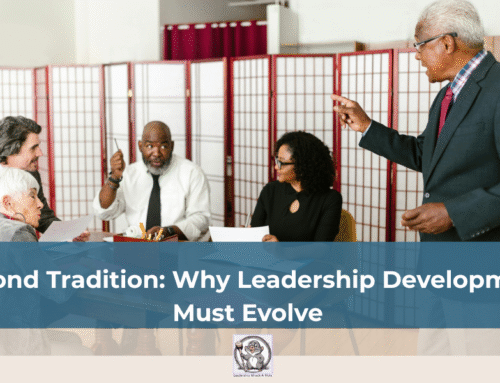
Due Process – An Absolute Right or Privilege?
By Ric Shriver
Over the past two weeks we have heard much about “due process” and whether it has been afforded to all those individuals technically eligible for the same. That is a big question, one which has been voiced, or grunted, since the beginning of man’s presence on the face of the earth! One could argue that when the original inhabitants of the earth first began to seek food, shelter, and companionship, there was no constitution, no bill of rights, no policy and procedure manuals to guide and govern the natural disputes that most likely occurred among the first humans. We now have more structural guidance than could have possibly been imagined among early civilizations, yet we haven’t gotten much better at resolving disputes among ourselves. I wonder why?
Several years ago, in one of my career roles as an HR leader, I was given the authority and responsibility for making final decisions about involuntary terminations that were being recommended within the organization I was affiliated with. Two of my esteemed HR Business Partners were recommending that we terminate the employment of a staff person who had willfully neglected her/his duties, placing a human life in potential danger. This was not the first infraction we had seen with this individual, and several witnesses confirmed the events that were compelling the two HR Business Partners, and the staff person’s leadership, to support showing this person the door. Therefore, I authorized the final release of this person’s employment. Unfortunately, and either forgotten or ignored by me, in our HR policy guiding employee relations decisions, there was a requirement that the final authority making the termination decision must personally interview the accused employee before finalizing the involuntary termination decision. For some reason, I did not adhere to that “procedural” requirement. And honestly, that requirement had not been adhered to for quite some time. At some point that procedural “due process” requirement had been included in the employee relations policy, and over the preceding years had been, by practice, ignored.
My procedural, due process, “oversight” became a major legal stumbling block for us. Two years after the decision to end the employment of this individual, the two business partners and I found ourselves facing the terminated employee in a federal district court in front of a jury. The issue at hand was the fact that “due process” had not been properly exercised and that, because of that oversight, we owed the plaintiff a substantial sum of money for the financial and reputational loss she/he had incurred. The trial went on for a solid week. The testimonies provided by my two business partners and me were painful, and I believe that the jury was holding us to account for not adhering to the requirements of our own policy. Fortunately for us, the judge was seeing through what “past precedent” had compelled us to do, the less than stellar employment record of the plaintiff, and the potential harm that could have been caused by her/his willful neglect. The judge ordered a “directed verdict” in our favor and dismissed the charges standing before us. We were relieved, but to this day I often wonder what the outcome of that trial would have been had the jury been left to determine the verdict.
As we consider the current “due process” dilemmas that keep raising their emotional voices in the press, as leaders we might also consider the “due process” rights of our customers, clients, and employee partners. There are many potential disputes that, based on our written policy and procedural guidelines, we might be compelled to enforce even when “common sense” would tell us to do otherwise. The attorney representing me and the organization I was affiliated with at the time conveyed to me prior to the trial beginning that, from a legal and “common sense” perspective, organizations would be wise to prepare and enforce policies based on the mission and values of the organization while limiting much of the procedural guidelines that too often as professionals we compulsively seek to document.
Another example of how procedural “due process” guidelines may have been abused in the healthcare industry where I spent most of my career is the dilemma we faced as healthcare administrators when patients or family members objected to the direct provision of care by a member of a “protected class” of people, e.g., non-white, LBGTQ, or some other protected group of individuals under the numerous federal regulations that have been issued over the past several decades providing fair and equal treatment for those individuals. Given our “due process” guidelines, we would typically always lean towards accommodating the requests of the complaining patients or family members. Such decisions did, periodically, raise the question of whether “due process” rights were being violated for the members of the protected class. Personally, and professionally, I preferred to defer to the individual caregiver being challenged, asking that individual what she/he would prefer to do under the circumstances. In most cases, the caregiver preferred to be reassigned to another patient rather than being subjected to ridicule and other verbal abuse by a patient or family member. However, in my own conscience, what I felt was the right “due process” thing to do was to stand behind the caregiver in question, letting the patient and family member know that we stood behind everyone of our qualified caregivers, regardless of their race, religion, social status, age, or other protected status.
So, the challenge questions for us as leaders are: 1) What are our policies and are they consistent with our stated mission and values? 2) What “due process” provisions are in place supporting those policies that may be challenging to enforce? The bigger question for all of us is “what is right” under the circumstances or dilemmas being presented, “what is right” being defined as what is best for the majority of the people being served by the leadership team. As we convey in Leadership Whack-A-Mole: Actionable Strategies for Leadership Challenges, the decisions leaders are faced with are rarely “black-and-white”, rather they are multidimensional in nature, requiring us to comprehend the many variables that typically do impact our environments and decision-making. And that is the role of a true leader – to demonstrate wisdom, well-rounded judgement, and decisions that reflect the best outcomes for the vast majority of the stakeholders of our organizations.




